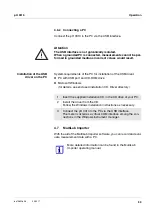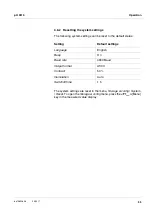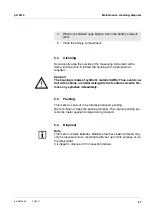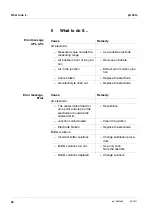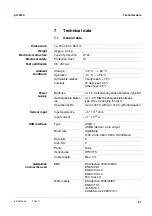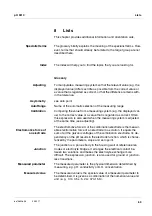
pH 3310
Lists
63
ba75802d06
05/2017
8
Lists
This chapter provides additional information and orientation aids.
Specialist terms
The glossary briefly explains the meaning of the specialist terms. How-
ever, terms that should already be familiar to the target group are not
described here.
Index
The index will help you to find the topics that you are looking for.
Glossary
Adjusting
To manipulate a measuring system so that the relevant value (e.g. the
displayed value) differs as little as possible from the correct value or
a value that is regarded as correct, or that the difference remains with-
in the tolerance.
Asymmetry
see zero point
AutoRange
Name of the automatic selection of the measuring range.
Calibration
Comparing the value from a measuring system (e.g. the displayed val-
ue) to the correct value or a value that is regarded as correct. Often,
this expression is also used when the measuring system is adjusted
at the same time (see adjusting).
Electromotive force of
an electrode
The electromotive force U of the combination electrode is the measur-
able electromotive force of an electrode in a solution. It equals the
sum of all the galvanic voltages of the combination electrode. Its de-
pendency on the pH results in the electrode function, which is charac-
terized by the parameters, slope and zero point.
Junction
The junction is a porous body in the housing wall of reference elec-
trodes or electrolyte bridges. It arranges the electrical contact be-
tween two solutions and makes the electrolyte exchange more
difficult. The expression, junction, is also used for ground or junction-
less transitions.
Measured parameter
The measured parameter is the physical dimension determined by
measuring, e.g. pH, conductivity or D.O. concentration.
Measured value
The measured value is the special value of a measured parameter to
be determined. It is given as a combination of the numerical value and
unit (e. g. 3 m; 0.5 s; 5.2 A; 373.15 K).





